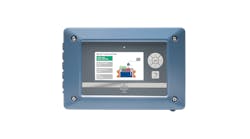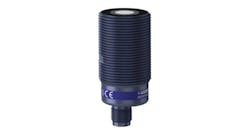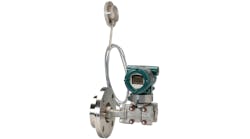It was cold for the midwestern United States, and when the frigid January morning got down to -15° F, the house operators were discussing which of two level indications they should believe. The “continuous” level, in this case an analog (4-20 mA) DP transmitter, was trending high, and high level could result in liquid carryover to the steam system—a bad thing for all the steam users on this cold day. But the other level instrument—an Eye-Hye multi-point device that used conductivity “spark plugs” to detect level—indicated that the level was getting perilously low. Since the level control was based on the 4-20 mA instrument, it was reducing boiler feed water (BFW) flow. Should they take the BFW in manual to catch what one instrument showed to be a low level, or believe the other measurement? The debate was settled moments later when the boiler tripped on low level, as two independent level switches provided the “votes” to trip the burner management system (BMS).
While our hardy neighbors to the North might be getting out the sunscreen when the thermometer reads above 0° F (-18° C), temperatures below -10° F put all the winterization and presumed specifications of equipment to the test. In midwestern latitudes, waste heat boilers and their ilk in process plants are rarely indoors, so all the boiler trim, e.g. gauge glasses, level switches and transmitters, must have thorough and intact insulation. Over many years of wear and tear, with insulation removed and reapplied for shutdowns and other routine maintenance, it can be far from certain that all critical equipment and instrumentation will endure the harshest weather. Without adding more redundancy, is there more information available that might have helped operators determine which level to believe?
I was fortunate to stumble upon an interesting talk by Minneapolis-area craft brewer Michael Koppelman last month at the Emerson Global Users Exchange. In his 20-barrel Badger Hill Brewery, Koppelman has been deploying very modest innovations, using inexpensive (less than $20 US) Arduino chips to connect a few level instruments to an Amazon cloud service. He was delighted to find how much he could infer about activities at the brewery from a single trend. Noise in the cold liquor (brewing water) tank meant the hot liquor tank was boiling, i.e. too hot and wasting energy. Changes in a single tank level could also be reliable indications of various steps in a batch, e.g. mash-in, sparging and so forth. “With access to this information, my head brewer can better plan his day, maybe sleep in a bit if he sees he can’t start a batch until later,” mused Koppelman.
The frugal entrepreneur of small-batch brewing was cleverly using his limited instrumentation budget for multiple inferred measurements. The same principle can be applied at the large process plant that has a more lucrative payout for reliability. For years, HART and fieldbus instruments have been available with a statistical process monitoring feature that can be configured to monitor the noise in the raw process signal. Changes in the noise can be used to make inferences about the validity of the measurement. If the high-side impulse line of a differential pressure (DP) level transmitter starts to plug up or freeze, one might be able to see the signal change from the actively boiling liquid interface to the more or less flat-line state of the plugged line. It might take some attention, time and tuning to make the inference of a suspect measurement reliable, but the information would have been invaluable to the puzzled operators on that cold January morning.
Rather than simply repeat a 4-20 mA signal from the emergency shutdown system to the DCS, today one can install SIL-rated signal splitters, like the Safety Series isolator and splitter from Moore Industries. The signal passed on to the DCS can have the full HART capability, so if you’ve configured it for some manner of plugged line detection, you may be able to inform the operator in near-real time of a measurement that shouldn’t be believed. The cost is a little more than an Arduino chip and space on Amazon’s cloud service, but so is the payout for a plant that dare not go cold on a frigid morning.
If the scrappy brewer can infer valued insights from a few measurements is the brewhouse, what’s stopping us from delivering the same to our end users?




